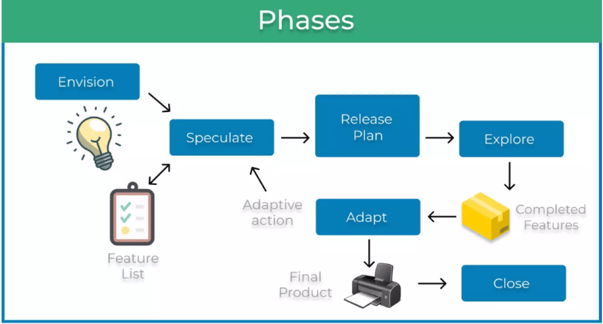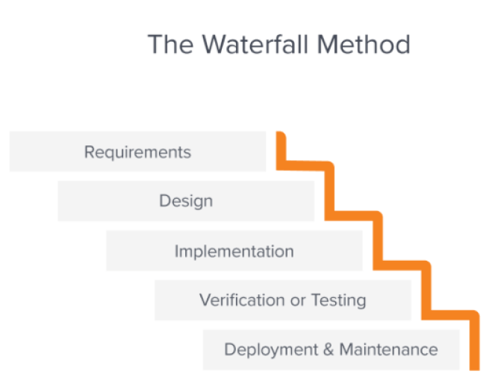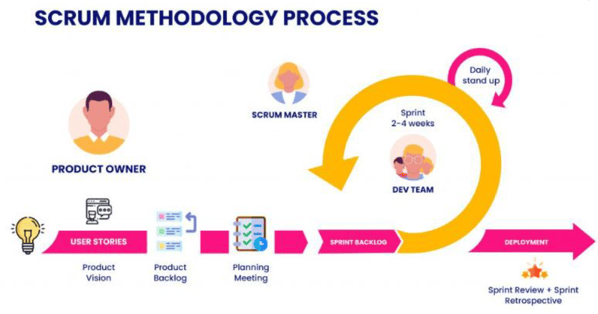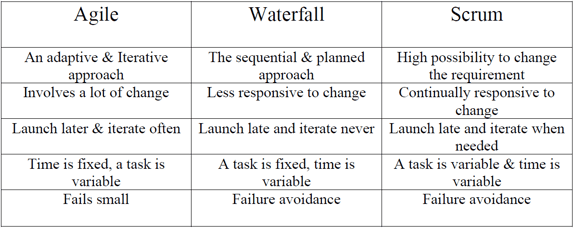Agile VS Waterfall VS Scrum - An overview of Project Management Methodologies
Agile VS Waterfall VS Scrum - An overview of Project Management Methodologies
Project management methodologies are essentially a set of guiding principles and processes that are used to plan, manage, and execute projects. The chosen project management methodology determines how the work is prioritised and completed.
Agile Methodology
The Agile Methodology is a way to manage a project by breaking it up into several phases. This method involves constant collaboration with stakeholders and continuous improvement at every stage. Once the project begins, Teams cycle through a process of planning, executing, and evaluating. Continuous collaboration is vital, both with team members and project stakeholders.
In general, the Agile project delivery process can be summarized in the following phases:
1. Envision – Create the vision for the customers as well as who will be involved in the project.
2. Speculate – This is an extension of the “Envision” phase, teams gather the initial broad requirements and develop an iteration plan based on the vision.
3. Explore – Work on project deliverables with a focus on flow to get feedback from the customer ASAP.
4. Adapt – Review delivered results and adapt as necessary to current conditions
5. Close – Conclude the project, pass along key findings.

Waterfall Methodology
Waterfall project management is a sequential, linear process of project management. It consists of several discrete phases. No phase begins until the prior phase is complete, and each phase’s completion is terminal – waterfall management does not allow you to return to a previous phase. The only way to revisit a phase is to start over at phase one.
1. Requirements – The first phase is to gather all the requirements for the project, which are usually outlined by the client.
2. Design – The project begins with a Design process that outlines the end result and how it will be achieved.
3. Implementation – Each element of design is put into place one at a time, each team member completes their assigned task in sequence before passing their work to the next group in line.
4. Verification – Once every element has been completed, these pieces are put together through integration and verification testing processes that ensure all the elements fit seamlessly together as intended at each phase of development by validating that each feature works properly and meets its requirements, before moving forward to create more features.
5. Deployment/Maintenance – After the project is completed, any bugs that are found are squashed and customers get to use their finished product. Maintenance also applies to adding new features of functionality.

Agile Scrum Methodology
Agile scrum methodology is a sprint-based project management system whose goal is to deliver the highest value to stakeholders. Scrum is a framework that allows for more effective collaborations among teams working on complex projects. Agile and scrum are two similar project management systems with a few key differences. Agile is more flexible and promotes leadership teams, while scrum is more rigid and promotes cross functional teams.

There are three key roles involved in this process: Scrum Master, Product owner & Scrum Team
1. Scrum Master – The scrum master is the facilitator of the scrum development process. The scrum masters’ responsibilities include coaching and motivating the team, removing impediments to sprints and ensuring the team has the best possible conditions to meet its goal and produce deliverable products.
2. Product Owner – The product owner represents stakeholders. The product owner determines product expectations, records changes to the product and administers a scrum backlog. The PO is also responsible for prioritizing goals for each sprint so that the most important deliverable features are built in each iteration.
3. Scrum Team – The scrum team is a self-organised group who have the business, design, analytical and development skills to carry out the actual work, solve problems and produce deliverable products. Members of the scrum team self-administer tasks and are jointly responsible for meeting each other’s sprint goals,
Agile is a philosophy that revolves around utilizing a set of core values and principles to manage work and tasks. Meanwhile, Scrum is a specific Agile method used to deliver a project.
What are the topmost comparisons between Agile VS Waterfall VS Scrum?

Conclusion
Agile and Waterfall are very different end products. Waterfall methodology could be applied to almost all types of IT projects but both agile and scum have their own restrictions based on the type of project they are involved in.
To browse IT roles, Click Here.
